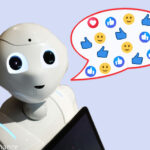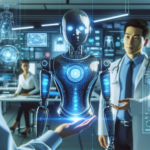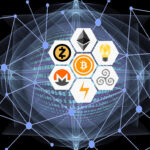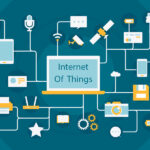In a world where technology continues to shape our lives, one particular advancement stands out: ChatGPT. This marvel of artificial intelligence has transcended its initial purpose as a text generator to become an integral part of human evolution. Let’s delve into the transformative journey from simple text to profound societal impact.

Table of Contents
Introduction
What is ChatGPT?
Fundamentally, OpenAI’s ChatGPT is an AI language model.. It utilizes deep learning techniques to understand and generate human-like text based on the input it receives. Its evolution from earlier versions to the current state has been nothing short of revolutionary, marking a significant milestone in the field of natural language processing.
Importance of text in human evolution:
Text has played a crucial role in the evolution of humanity, serving as a cornerstone for communication, knowledge preservation, and cultural transmission. Since its inception, text has enabled humans to record their thoughts, ideas, and experiences, transcending the limitations of oral tradition and paving the way for the accumulation of collective wisdom.
One of the paramount importance of text in human evolution lies in its ability to preserve knowledge across generations. Unlike oral traditions that are susceptible to distortion and loss over time, written text provides a durable medium for storing information. Ancient texts, such as the Sumerian clay tablets or Egyptian hieroglyphs, have allowed us to decipher the mysteries of past civilizations and gain insights into their beliefs, practices, and achievements. This preservation of knowledge has served as a foundation for the advancement of human civilization.
Moreover, text has been instrumental in facilitating the dissemination of ideas and fostering intellectual exchange. Through written documents, individuals can share their discoveries, theories, and perspectives with a wider audience, transcending geographical and temporal barriers. Johannes Gutenberg’s invention of the printing press in the fifteenth century transformed the dissemination of knowledge by enabling greater public access to books.This democratization of knowledge fueled the Renaissance, Enlightenment, and subsequent waves of intellectual and cultural flourishing.
Text has also been instrumental in the development and refinement of language itself. The process of writing requires a degree of precision and clarity that often leads to the standardization of grammar, syntax, and vocabulary. This standardization not only facilitates communication but also lays the groundwork for the emergence of complex linguistic structures and literary forms. Textual artifacts, ranging from ancient epics to modern novels, serve as repositories of linguistic diversity and literary expression, reflecting the richness and complexity of human language.
Furthermore, text has played a pivotal role in shaping human identity and cultural heritage. Sacred texts, such as the Bible, Quran, or Vedas, have provided moral guidance, spiritual nourishment, and a sense of belonging to billions of individuals worldwide. Literature, art, and historical documents, meanwhile, offer insights into the diverse experiences and perspectives of different societies and epochs, fostering empathy, understanding, and cross-cultural dialogue.

ChatGPT’s Role in Human Evolution
ChatGPT’s role in human evolution extends beyond its immediate functions as a language model to profoundly impact the way humans communicate, interact, and learn in the digital age. As a powerful tool for natural language processing and generation, ChatGPT represents a significant advancement in artificial intelligence technology that has the potential to shape the trajectory of human evolution in several key ways.
First and foremost, ChatGPT facilitates more seamless and intuitive human-computer interaction, bridging the gap between humans and machines by enabling natural language conversations. Through its ability to understand and generate human-like text, ChatGPT enhances accessibility to technology for individuals with diverse linguistic backgrounds, literacy levels, and abilities, democratizing access to information and services in an increasingly interconnected world.

Understanding ChatGPT
Overview of ChatGPT’s capabilities.
OpenAI’s ChatGPT is an advanced language model with many features that make it a useful tool for understanding and producing natural language in a variety of contexts. Leveraging cutting-edge techniques in deep learning and natural language processing, ChatGPT excels in tasks such as conversation generation, text completion, question answering, summarization, and more.
One of ChatGPT’s key strengths lies in its ability to generate human-like text responses in conversation settings. Trained on vast amounts of text data from the internet, ChatGPT can engage in dialogues on a diverse range of topics, offering contextually relevant and coherent responses. Whether it’s engaging in casual small talk or discussing complex subjects, ChatGPT can adapt its conversational style to match the user’s preferences and tone.
Furthermore, ChatGPT demonstrates impressive text completion capabilities, making it useful for tasks such as writing assistance, content generation, and creative brainstorming. By providing a prompt or partial sentence, users can harness ChatGPT’s language generation capabilities to produce coherent and contextually appropriate text continuations. This feature is particularly valuable for writers, students, and content creators seeking inspiration or assistance with their writing projects.
Additionally, ChatGPT excels in question answering tasks, where it can provide accurate and informative responses to a wide range of queries. Leveraging its comprehensive knowledge base and understanding of language semantics, ChatGPT can effectively retrieve and synthesize information from its training data to address user inquiries on various topics. Whether it’s factual questions, trivia, or inquiries about specific domains, ChatGPT can deliver relevant and reliable answers.
Moreover, ChatGPT offers robust summarization capabilities, enabling it to distill large volumes of text into concise and coherent summaries. Whether it’s summarizing articles, documents, or lengthy passages of text, ChatGPT can extract the essential information and present it in a digestible format. This feature is invaluable for researchers, students, and professionals who need to quickly grasp the key points of complex texts.
How it processes and generates text.
ChatGPT processes and generates text through a sophisticated deep learning architecture known as a transformer model. This architecture consists of multiple layers of neural networks that work together to understand and generate natural language.
- Tokenization: The input text is first tokenized, which involves breaking it down into smaller units called tokens. These tokens could be words, subwords, or characters, depending on the specific tokenizer used.
- Embedding: Each token is then converted into a high-dimensional numerical representation known as an embedding. These embeddings capture semantic information about the tokens and their relationships with each other.
- Encoding: The embeddings are passed through a series of transformer encoder layers. Each encoder layer consists of self-attention mechanisms and feedforward neural networks. The self-attention mechanism allows the model to weigh the importance of different words in the input sequence when generating output, capturing dependencies between words and improving context understanding.
- Decoding: After encoding the input text, the model generates text by decoding the encoded representations. The model predicts the next token in the sequence during decoding based on the context provided by the input text and the tokens generated thus far.. This process continues iteratively until the desired length of text is generated or a stopping condition is met.
- Sampling: ChatGPT can generate text using various sampling techniques, such as greedy decoding, beam search, or nucleus sampling. These techniques determine how the model selects the next token based on its probability distribution over the vocabulary.
- Post-processing: Finally, the generated text may undergo post-processing steps, such as removing special tokens, formatting, or applying additional constraints, depending on the specific application requirements.
Text-Based Communication
Text-based communication refers to the exchange of messages and information using written language, typically transmitted through digital mediums such as email, instant messaging, social media platforms, and online forums. This form of communication has become increasingly prevalent in today’s digital age, offering a convenient and versatile means of interaction across various contexts and settings.
One of the key characteristics of text-based communication is its asynchronous nature, allowing individuals to send and receive messages at their own convenience without the need for real-time interaction. This flexibility enables users to communicate across different time zones, schedules, and priorities, making it particularly well-suited for remote collaboration, global networking, and maintaining long-distance relationships.
Moreover, text-based communication offers a degree of permanence and documentation, allowing messages to be archived, searched, and referenced for future use. This feature is valuable for businesses, academic institutions, and organizations that rely on written records for documentation, compliance, and knowledge management.
Text-based communication also facilitates clear and precise expression, as individuals have the opportunity to compose and revise their messages before sending them. This can help reduce miscommunication, ambiguity, and misunderstanding, particularly in complex or sensitive discussions where clarity is paramount.
Furthermore, text-based communication enables individuals to overcome barriers such as language differences, speech impediments, or hearing impairments, providing an inclusive means of interaction for diverse populations. Through written language, individuals can communicate effectively regardless of their spoken language proficiency or physical abilities.
Despite its many advantages, text-based communication also presents challenges and limitations. For instance, the absence of non-verbal cues such as tone of voice, facial expressions, and body language can sometimes lead to misinterpretation or ambiguity in communication. Additionally, the lack of immediate feedback and real-time interaction can hinder spontaneous conversation and interpersonal rapport-building.
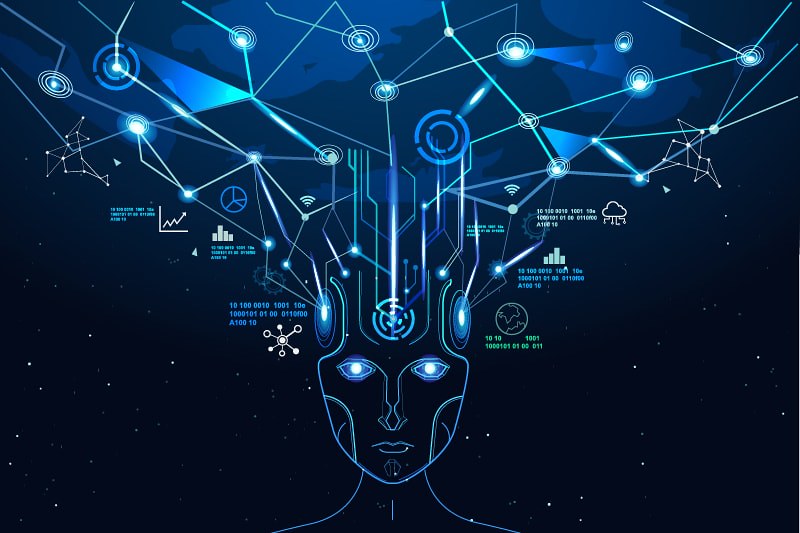
Education and Learning
Education and learning are fundamental components of human development, enabling individuals to acquire knowledge, skills, and competencies that are essential for personal growth, professional advancement, and societal progress. Education encompasses formal instruction provided in schools, colleges, and universities, as well as informal learning experiences gained through self-directed exploration, mentorship, and practical application.
At its core, education serves as a catalyst for intellectual stimulation and critical thinking, fostering curiosity, creativity, and a thirst for knowledge. By engaging with diverse subjects, disciplines, and perspectives, individuals are empowered to broaden their understanding of the world and develop a deeper appreciation for its complexities and nuances.
Moreover, education plays a pivotal role in equipping individuals with the skills and competencies needed to navigate the challenges of the modern world. From literacy and numeracy to digital literacy and problem-solving, education provides a foundation for lifelong learning and adaptability in an ever-changing landscape.
Furthermore, education serves as a vehicle for social mobility and economic opportunity, offering individuals the chance to improve their socio-economic status and quality of life. By providing access to quality education and training, societies can empower marginalized populations, break the cycle of poverty, and foster inclusive growth and development.
In addition to academic knowledge and skills, education also encompasses the cultivation of values, attitudes, and ethical principles that are essential for responsible citizenship and ethical leadership. Through moral and civic education, individuals learn to respect diversity, uphold human rights, and contribute positively to their communities and the wider world.
In today’s digital age, technology has revolutionized the field of education, offering new opportunities for personalized learning, collaboration, and access to resources. Online platforms, educational apps, and digital tools enable learners to access educational content anytime, anywhere, and at their own pace, democratizing access to education and bridging geographical and socio-economic barriers.
Creative Expression
Creative expression encompasses the diverse ways in which individuals convey their thoughts, emotions, and ideas through various forms of art, media, and communication. From visual arts and literature to music, dance, and beyond, creative expression serves as a powerful outlet for self-discovery, personal growth, and cultural enrichment.
At its essence, creative expression allows individuals to tap into their imagination, intuition, and unique perspectives to produce original works that reflect their innermost thoughts and experiences. Whether it’s painting a canvas, composing a piece of music, or writing a poem, the act of creation enables individuals to explore and communicate their identity, beliefs, and emotions in meaningful and transformative ways.
Moreover, creative expression fosters innovation and exploration by encouraging individuals to think outside the box, challenge conventions, and push the boundaries of what is possible. Through experimentation, iteration, and risk-taking, artists and creators can break new ground, inspire others, and contribute to the evolution of culture and society.
Furthermore, creative expression serves as a catalyst for connection and community-building, fostering empathy, understanding, and shared experiences among individuals from diverse backgrounds and perspectives. Art exhibitions, performances, and cultural events provide platforms for dialogue, collaboration, and cross-cultural exchange, bridging divides and fostering a sense of belonging and collective identity.
Problem-Solving and Innovation
Problem-solving and innovation are essential processes that drive progress, creativity, and advancement in various fields and domains. At their core, problem-solving and innovation involve identifying challenges, generating creative solutions, and implementing effective strategies to address them, ultimately leading to positive outcomes and improvements in quality of life.
Problem-solving begins with recognizing and understanding the nature of a problem or challenge. This often involves analyzing the underlying causes, constraints, and implications of the problem, as well as identifying relevant stakeholders and their perspectives. By gaining a comprehensive understanding of the problem, individuals and teams can develop informed strategies and solutions to address it effectively.
Innovation, on the other hand, involves the creation and implementation of novel ideas, products, or processes that offer value and contribute to positive change. Innovation often emerges from a combination of creativity, collaboration, and critical thinking, as individuals and organizations explore new possibilities, experiment with alternative approaches, and challenge conventional wisdom.
Problem-solving and innovation are iterative processes that involve experimentation, feedback, and continuous improvement. Through trial and error, individuals and teams refine their ideas and strategies, learning from successes and failures alike, and adapting their approach based on feedback and changing circumstances. This iterative approach fosters resilience, flexibility, and adaptability, enabling individuals and organizations to navigate uncertainties and overcome obstacles on the path to success.
Ethical Considerations
Ethical considerations are essential principles that guide individuals, organizations, and societies in making responsible decisions and actions that uphold moral integrity, fairness, and respect for human rights and dignity. In various fields and contexts, ethical considerations play a critical role in ensuring that decisions and actions align with values, principles, and societal norms, ultimately contributing to the well-being and welfare of individuals and communities.
One of the fundamental ethical considerations is respect for human rights and dignity. This entails recognizing and upholding the inherent worth and equality of all individuals, regardless of factors such as race, gender, ethnicity, religion, or socio-economic status. Ethical decision-making involves ensuring that actions do not infringe upon the rights, freedoms, and well-being of others, and that individuals are treated with fairness, respect, and compassion.
Another key ethical consideration is honesty and transparency. This involves being truthful and forthright in communication and interactions, avoiding deception, manipulation, or withholding of information that could mislead or harm others. Upholding honesty and transparency fosters trust, credibility, and accountability in relationships and institutions, promoting integrity and ethical conduct.
Future Implications
Future implications refer to the potential consequences, outcomes, or impacts of present actions, decisions, or trends on future events, developments, and scenarios. Anticipating future implications involves considering various factors, trends, and uncertainties that may shape the trajectory of society, technology, the environment, and other domains. Understanding future implications is essential for informed decision-making, planning, and adaptation to emerging challenges and opportunities.
One area with significant future implications is technology and innovation. Rapid advancements in fields such as artificial intelligence, biotechnology, and robotics have the potential to revolutionize industries, economies, and societies. While these technologies offer promising opportunities for improving efficiency, productivity, and quality of life, they also raise ethical, social, and environmental concerns, such as job displacement, privacy infringement, and exacerbation of inequalities.
Furthermore, demographic trends, such as population growth, aging populations, and urbanization, have far-reaching implications for healthcare, social services, infrastructure, and resource management. Addressing these challenges requires proactive measures to ensure sustainable development, equitable access to resources, and resilient communities in the face of demographic shifts and changing socio-economic dynamics.
Conclusion
In conclusion, ChatGPT’s journey from text to transformation exemplifies the profound impact of AI on human evolution. As we navigate the increasingly interconnected landscape of man and machine, it is essential to embrace the opportunities afforded by AI while remaining vigilant against its potential pitfalls. By harnessing the power of AI responsibly, we can chart a course towards a future where technology enriches and empowers us all.
FAQs
- How does ChatGPT differ from other AI models? ChatGPT stands out for its ability to generate human-like text based on the input it receives. Unlike other AI models, it excels in natural language understanding and generation.
- Can ChatGPT understand emotions in text? While ChatGPT can recognize emotional cues in text to some extent, its understanding of emotions is limited compared to human comprehension.
- Is there a risk of ChatGPT being misused? Like any powerful technology, there is a risk of ChatGPT being misused for malicious purposes. It is crucial to implement safeguards and ethical guidelines to mitigate this risk.
- Can ChatGPT contribute to job loss? While AI technologies like ChatGPT have the potential to automate certain tasks, they also create new opportunities and augment human capabilities. The impact on employment depends on how AI is integrated into various industries.
- How can individuals contribute to improving ChatGPT’s abilities? Individuals can contribute to improving ChatGPT’s abilities by providing feedback, participating in training data collection, and advocating for responsible AI development practices.


